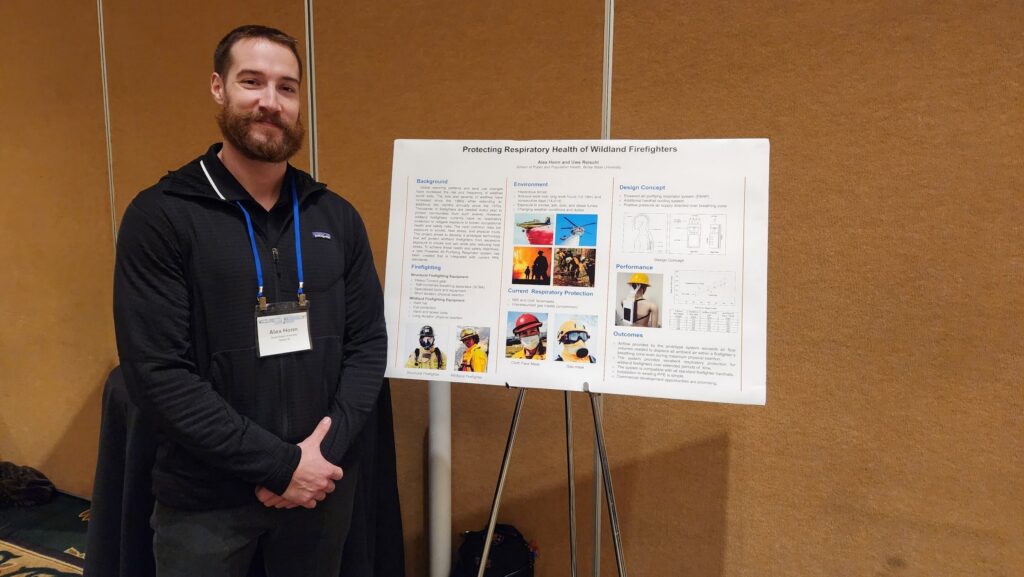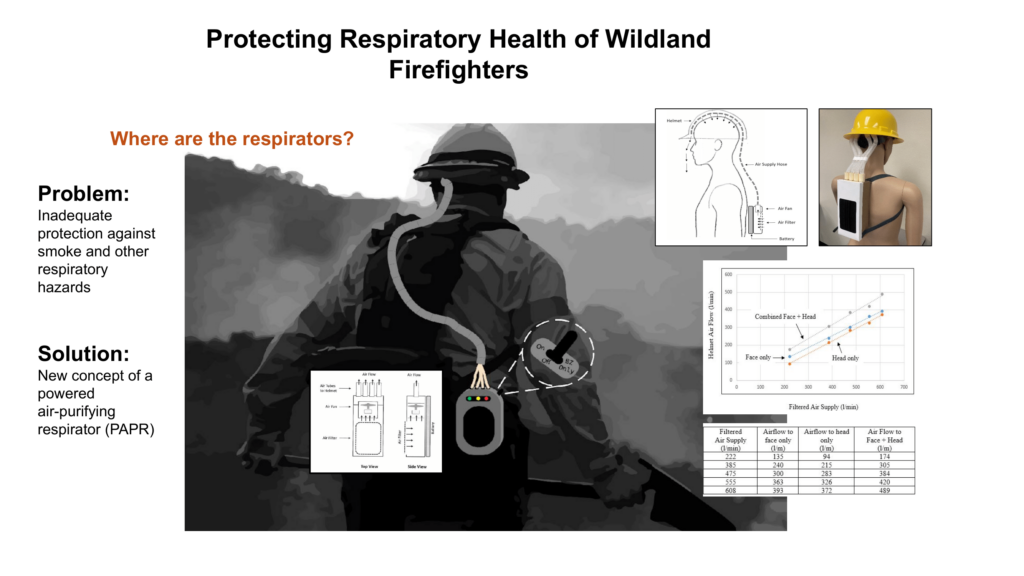
Master of Public Health student Alex Honn is no stranger to working in intense heat, smoke fumes and dust. As a wildland firefighter and student researcher, Honn knows just how important it is to bring practical, effective respiratory protection to the forefront of firefighting.
Honn began his studies in the online Bachelor of Arts in Public Health and is now completing a Master of Public Health with an emphasis in health management and leadership.
As part of his research in the program, Honn has been studying the effects of exposure to smoke, dust, diesel fumes, physical hazards and heat on wildland firefighters. Honn has been working alongside School of Public and Population Health Professor Uwe Reischl to design a respiratory protection device for these firefighters, as no approved device currently exists.
To achieve their design, Honn said, they have focused heavily on designing the device for and integrating it into currently used personal protective equipment standards. The resulting technology is a positive pressure, powered air purifying respirator.
This research combines Honn’s ongoing interest in occupational and environmental health and his desire to create something tangible through his research.
“I wanted to focus on something actionable, needed and that would have a potentially significant impact on the health and wellness of wildland firefighters,” Honn said. “ The lack of respiratory protection seemed like a blatant gap that, if filled, would help mitigate known risk exposures.”
His research also draws on his own experience as a seasonal wildland firefighter, which lends him a unique perspective as both a researcher and an experienced firefighter. This perspective helped the duo design the device to not only be operational but also realistic for those wearing the device.
“Leveraging my personal experience helped significantly predict what end-user opinions might be and inform a design that would be culturally and functionally acceptable,” he said.
Honn recently shared his and Reischl’s research at the Wildland Fire Management Strategy Workshop where he presented a prototype to wildfire management practitioners.

At the workshop, Honn found that even though he was one of only a few public health officials present — attendees were interested in further collaborations between public health and wildfire management practitioners. The partnerships formed have granted him an invite to speak at the Wildfire Conservancy Symposium this February.
Honn feels that these collaborations are increasingly important as changes in our climate alter our environments — requiring new resources and attention.
“Wildfire is an urgently pressing public health concern that is here to stay,” Honn said. “Traditionally, most wildfire research and funding has been focused on management strategies, not necessarily health implications. The public health practitioner has a role in wildland fire by way of understanding the occupational health impacts on firefighters, the environmental health impacts on communities and in helping develop wildland-urban interface practices, including community preparedness planning.”
To students looking to get into research, Honn’s advice is: “Do it. Start early, stay persistent, stay flexible and keep it simple.”
Honn said Boise State has provided a strong foundation to continue research that bridges the gap between wildland fire and public health and hopes others follow suit in their own research.
“If you have a research idea, coordinate with faculty as early as possible to identify collaborators and begin the process. They are here to support you and have the real-life experience to do so effectively. Use the resources available to you while you have them,” Honn said.